When you think of accordions, you probably either picture people in funny costumes playing polkas while others drink beer or Weird Al Yankovich. The latter made the accordion popular in the West with his zany parodies, which originally included polka-style mixes of popular tunes using an accordion.
But one thing you might not know is that the accordion actually has a history spanning over 2,000 years. The modern accordion uses a reed placed over an opening. The unique shape forms a bellows, which causes air to pass through the reed, producing sound.
The modern accordion is accredited to three different individuals: Timofey Vorontsov in 1820, Christian Friedrich Ludwig Buschmann in 1822, and Ivan Sizov in 1830. The name itself is derived from “akkord”, a German word meaning “musical chord”.
Over the years, several different types of accordion have been created, some using buttons, some with keys, and some using multiple note producing systems. Here are 16 different kinds of accordion, some of which you may have actually seen and some more obscure.
See Also: 11 Types of Tubas
Types of Accordions
1. Bandoneon
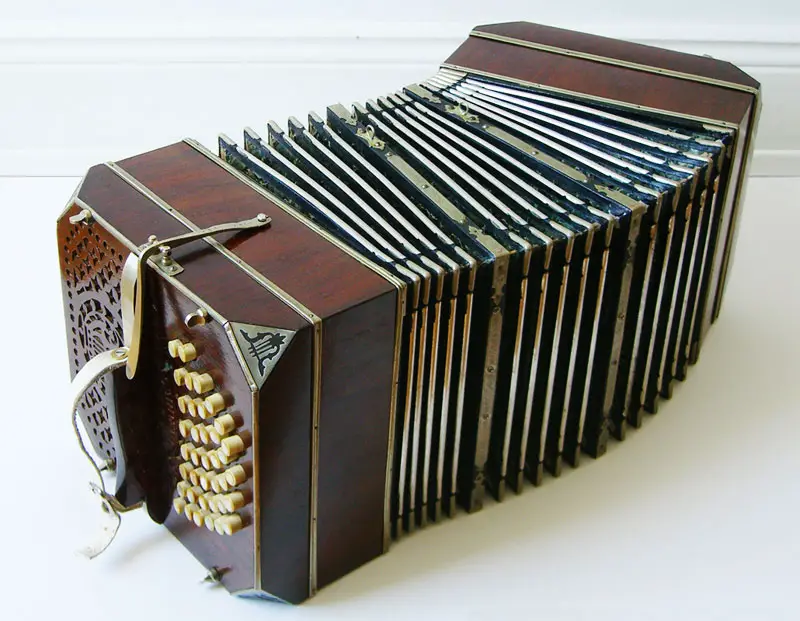
This concertina is large enough to require knee support during performances. The instrument was created by the Heinrich Band for religious and popular music, but has found its main popularity in tango music.
2. Bayan
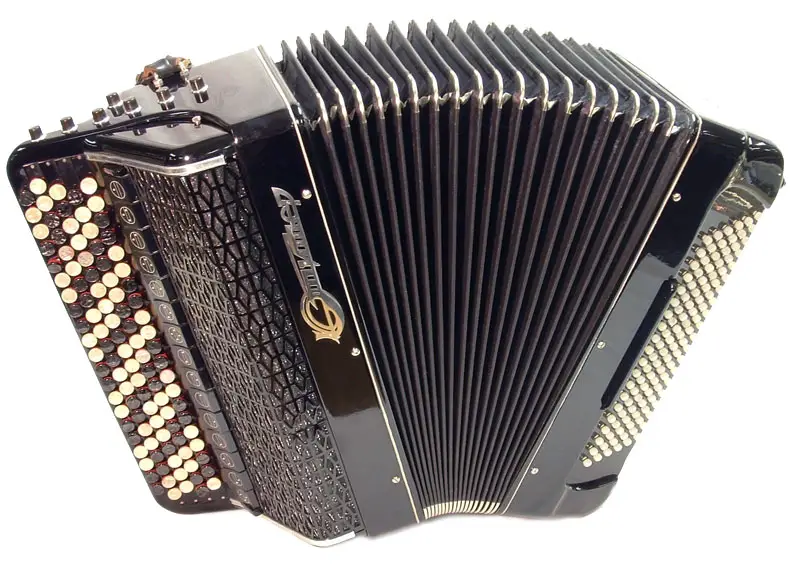
Named after an 11th century minstrel named Boyan, the bayan is a Russian chromatic button accordion with broad, rectangular reeds. It has a richer sound than most other Western accordions, and the reeds are not tuned in with the tremolo, lending to its unique sound.
3. Bisonoric Accordion
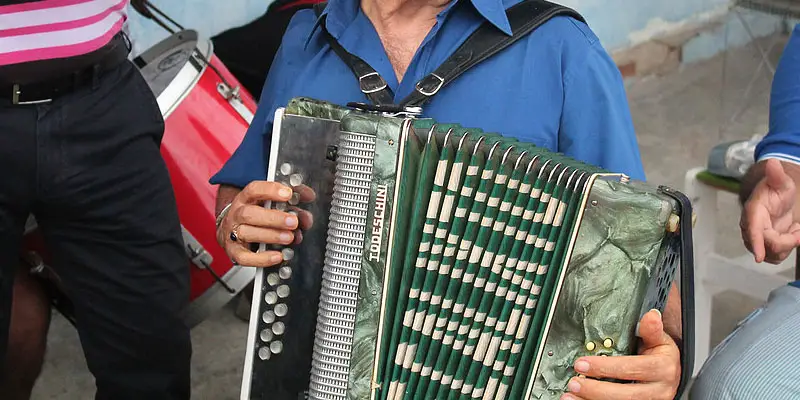
These accordions are capable of producing two different notes or pitches per button, with the sound changing depending on whether the bellows are being expanded or contracted.
4. British Chromatic Accordion
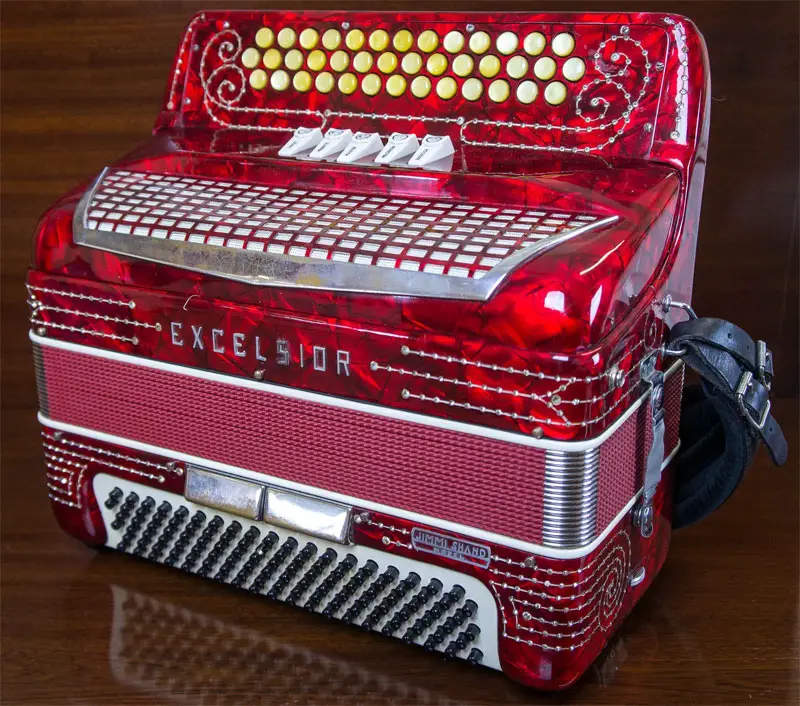
Popular among the Scottish, this organ uses the stradella system for the left hand and features a bisonoric right hand.
See Also: 13 Different Types of Bagpipes
5. Button Accordion
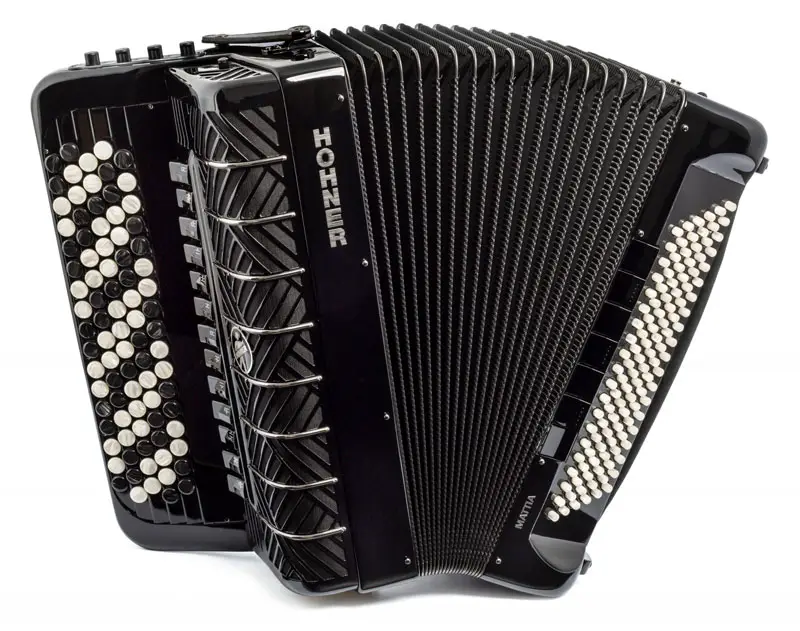
One of the two major categories of accordion, the button accordion has buttons on its treble side instead of keys. One side has single note buttons, while the other has bass and chord buttons.
It’s believed the first button accordion was created by Franz Walther in 1859.
See Also: 24 Types of Drums
6. Chromatic Accordion
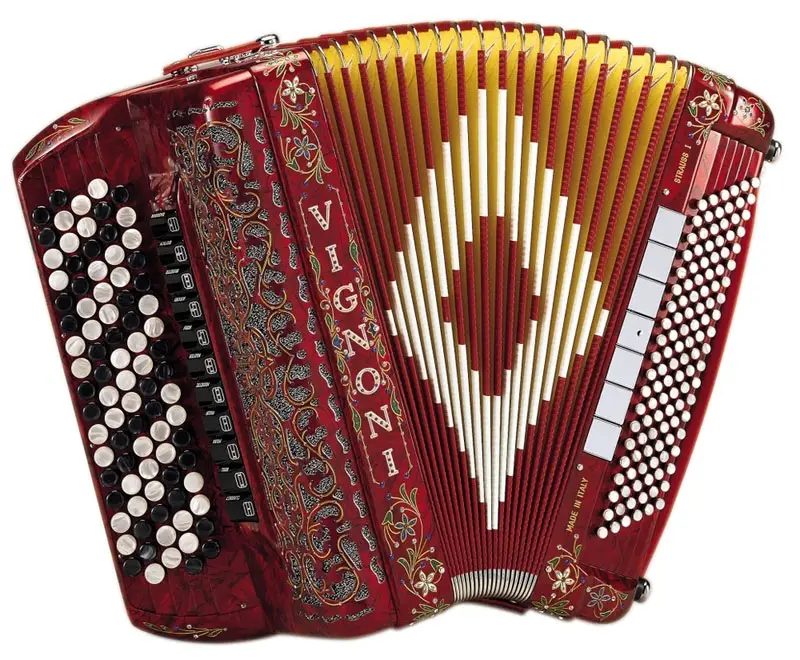
These button accordions have buttons on both the treble and bass sides. The bass buttons are arranged in the same way as on a piano accordion and is generally configured to free bass or stradella systems.
The treble side has three to five rows of buttons and usually includes a C-Grif or B-Grif.
7. Concertina
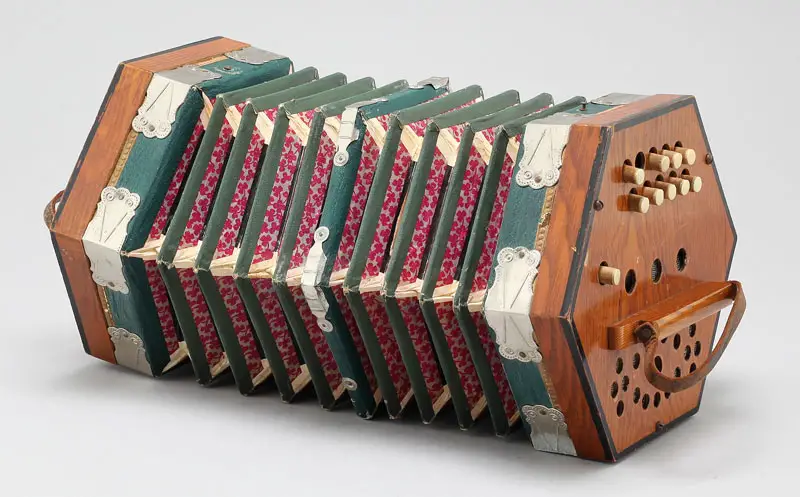
While considered a type of accordion, concertinas aren’t true accordions in the modern sense of the word. These small free reed instruments are popular among sailors and others who are often on the move.
Depending on the specific type, they may be unisonoric or bisonoric.
8. Diatonic Accordion
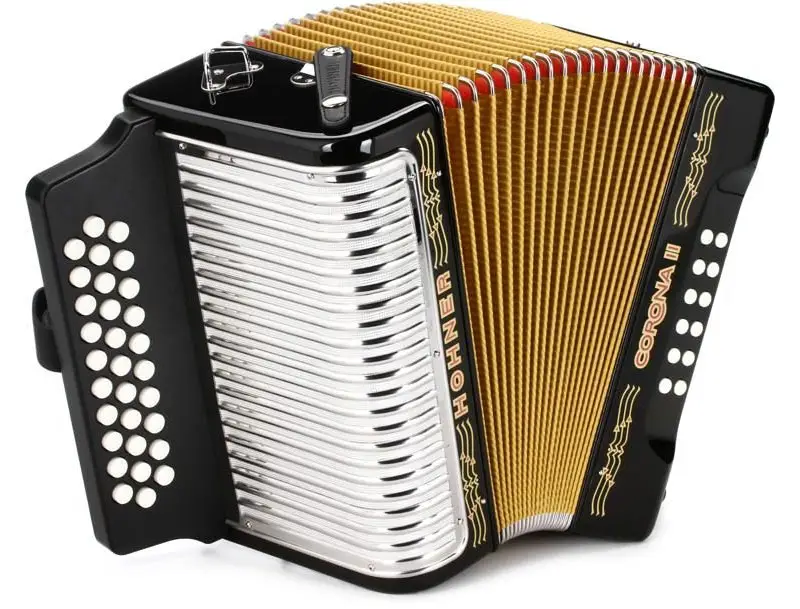
Most commonly used in folk music, diatonic organs are a subgroup of button accordion that have bisonoric reeds. These accordions are more limited in what keys they can play, with a three row model usually having either C, F, and G or E♭, B, and F keys.
9. Digital Accordion
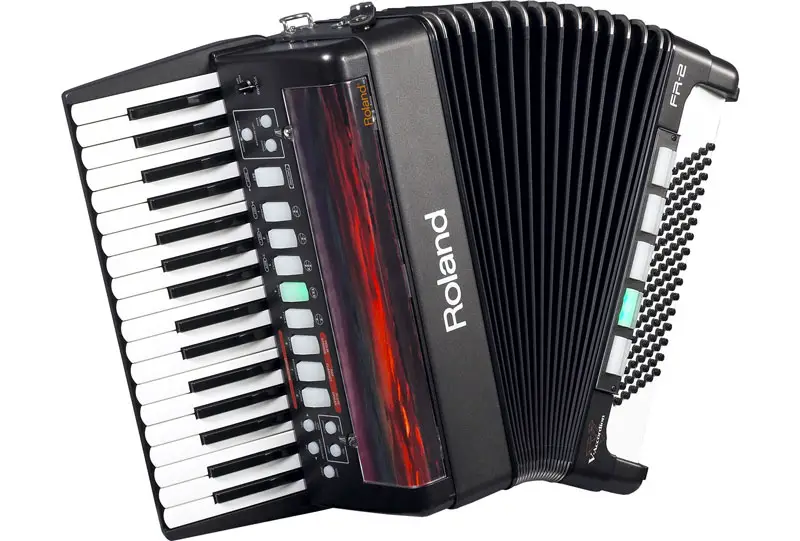
This modern type of accordion has an onboard sound system that may or may not include free reeds. These play just like a traditional accordion, but allow for additional effects, such as chorus or reverb and are MIDI compatible.
10. Piano Accordion
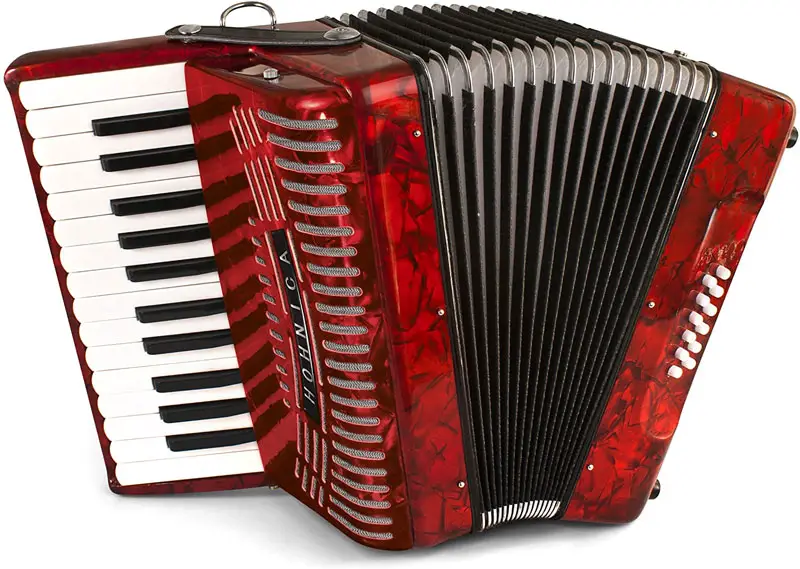
This category of accordion features keys instead of buttons. The treble keyboard, found on the right side of the instrument, is designed just like a piano, making them easier to learn.
The board has various numbers of keys, with a full-sized board containing 41 keys across more than three octaves. On the left side is a board containing buttons that allow for bass accompaniment, with most full-sized models having 120 buttons and may use free bass, French 3-3, or stradella bass systems.
However, students generally start out on a 12 bass accordion, which has two octaves of keys and only 12 bass buttons.
See Also: 13 Different Types of Cellos
11. Russian Garmon
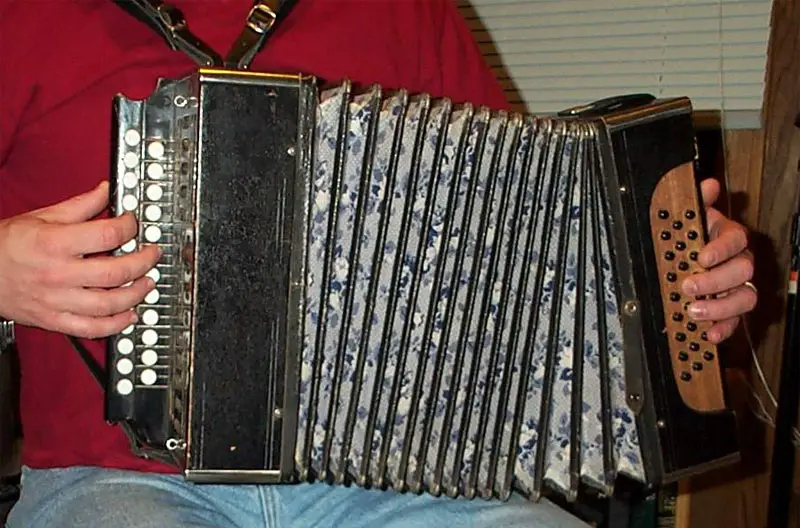
This chromatic button accordion has two rows on the treble side which use a diatonic scale. The left side has at least two rows and plays both the primary chords and relative harmonic minor keys.
Some models include right-hand buttons for additional chords or accidental notes and additional free bass buttons. It has a popularity range that includes Georgia, Armenia, Slovenia, and many cultures in the Ural and Vulga regions.
12. Schrammel Accordion
Named after a schrammel quartet; which is a quartet consisting of clarinet, accordion, and two violins; this instrument merges two types of accordion.
The right hand is that of a chromatic button accordion, while the left side has a 12-button bisonoric diatonic keyboard.
Read Also: 13 Types of Clarinets
13. Schwyzerörgeli (AKA Swiss organ)
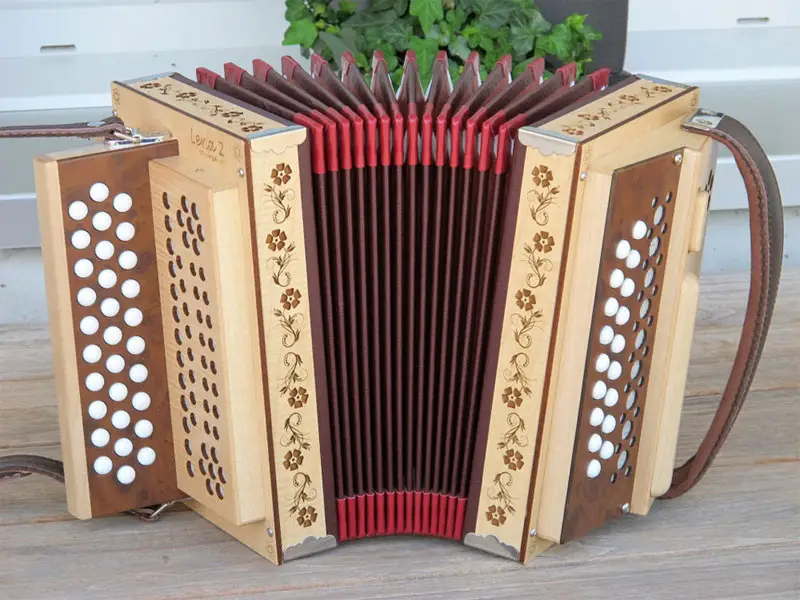
Found almost exclusively in Switzerland, this unique accordion has a diatonic treble side consisting of three rows of buttons and a unisonoric bass side with 18 buttons.
14. Steirische Harmonika
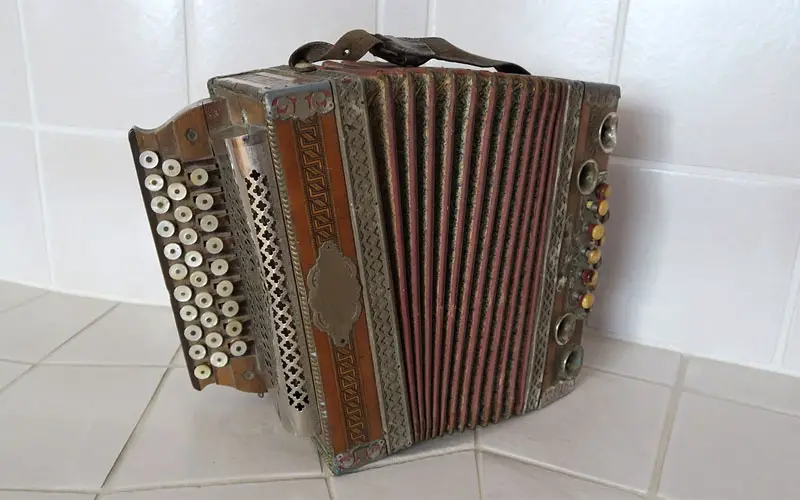
Popular throughout Austria, Bavaria, the Czech Republic, Slovenia, and parts of Italy, the Steirische harmonika is a bisonoric diatonic button accordion. It has rich bass notes and one key per scale that is unisonoric.
15. Trikitixa/Trikiti
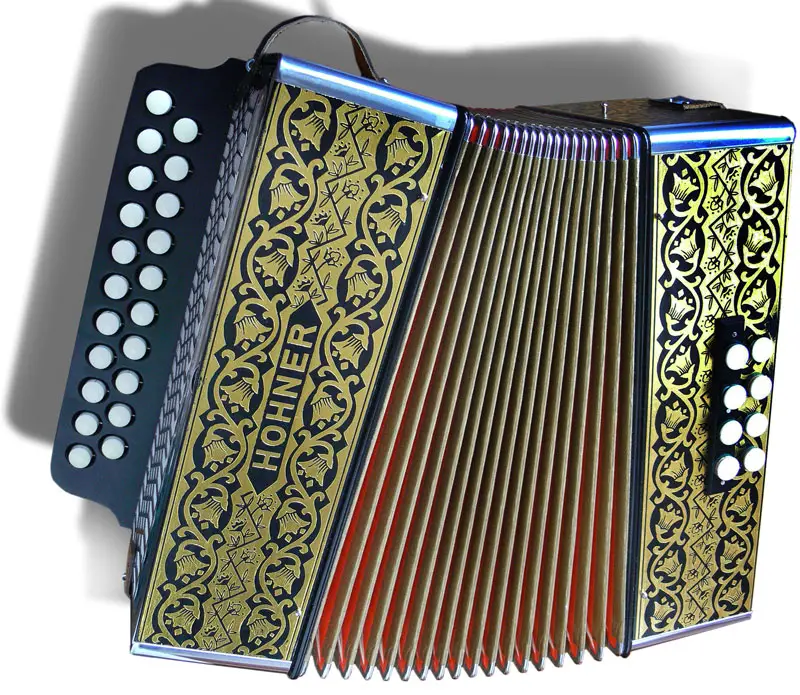
This is the Basque national musical instrument and is particular to that culture. It has a two-row bisonoric treble side and diatonic, unisonoric bass side with 12 buttons.
16. Unisonoric Accordion
Some accordions use a unisonoric system, which has a set pitch or note on both the pull and push of the bellows. In these models, the instrument size has an effect on pitch.

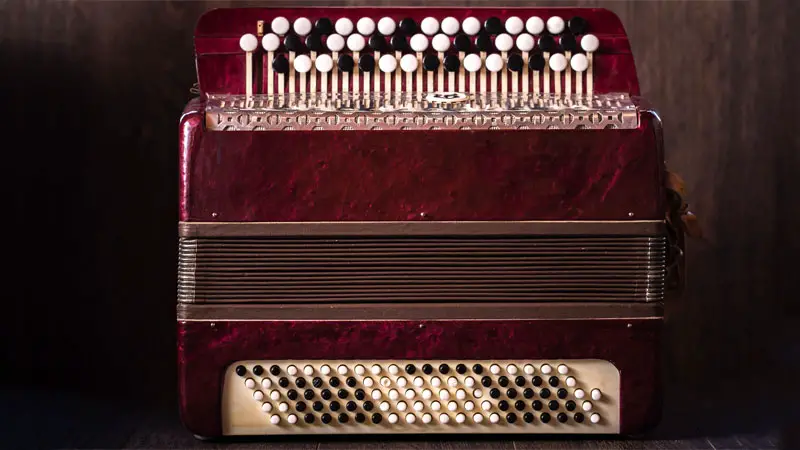
There was another type of chromatic accordion, like my teacher Joe Foydl played. It had three rows of keys on the right, not buttons, and the full complement of chord buttons on the left.